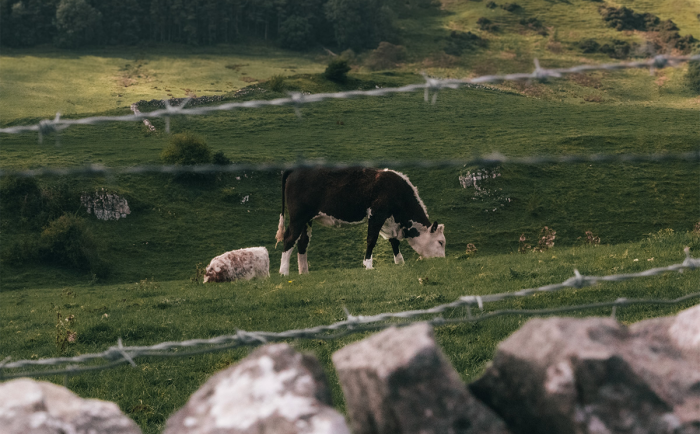
The most common painkillers used in cattle are also known as Non-Steroidal Anti-Inflammatory drugs (NSAIDs).
They include medicines you may know as Ketofen (CEVA Animal Health), Metacam (Boehringer Ingelheim), Allevinix (CEVA Animal Health) and Caprieve (Norbrook).

These are just a few and there are lots of other brands available so speak to your vet for more information.
They work the same way as an ibuprofen tablet you would take for a headache, as it is also an NSAID. Please note this is not a suggestion to use ibuprofen in your cows – it’s not licensed and just imagine how many tablets you’d need, never mind dosing the cow!
Lameness is an important issue for many reasons including welfare, health, production and economics. Lame cows have a lower milk yield, poorer fertility and are more likely to be culled. So, it is economically in a farm’s best interest to minimise lameness where possible.
Additionally, a recent study found 32 per cent of dairy cows were lame at any one time. This makes it a key health issue of dairy cattle in the UK.
Not only this but this creates a large amount of scope to reduce lameness, where often small changes can make a large difference.
As mentioned, lameness is important for welfare reasons and consumer driven supermarket contracts have strict levels of lameness permitted.
The consumer element is driven by lameness being a painful condition, which is generally accepted. However, treatment of lame cows with a painkiller is often not routine.
Using a painkiller alongside a block and a trim for treatment of a sole ulcer, sole haemorrhage or white line disease will result in a cow being more likely to return to soundness.
Traditionally the treatment for these conditions has been centred around taking weight off the affected area through trimming and application of blocks, which is definitely beneficial.
However, adding a painkiller alongside this treatment improves cure rate from 35 per cent to 56 per cent. The positive impact on production, fertility and longevity alone will pay for the cost of the medication.
More recently work has been done to assess the impact of treating cows with digital dermatitis with a painkiller at the time of cleaning and spraying. Cows were 20 times more likely to stay lame if they were not treated with a painkiller. Not only this but early lactation cows produced 10L extra milk over a week when treated with a painkiller.
Prompt treatment is also really important, and much of the work done is on score 2 cows (on the standard AHDB 0-3 scale). It may be that score 2 cows are not perceived as in need of a painkiller. But it is in fact these cows that need the painkiller, alongside other relevant treatment, to prevent them either maintaining their score 2 status or becoming score 3s.
In summary, the take home message from this is to treat lame cows early and with a painkiller to minimise lameness on your farm.
The effect may be more noticeable in early lactation cows, so start with these if you need convincing.
Please note this is one element of the very big picture of lameness control. Other elements include looking at infection pressure, hoof quality and shape and forces on the feet including cow flow and standing times.
There is a lot of useful information in the AHDB knowledge library that can be found online. You can also speak to your vet about other ways to control lameness on your farm.